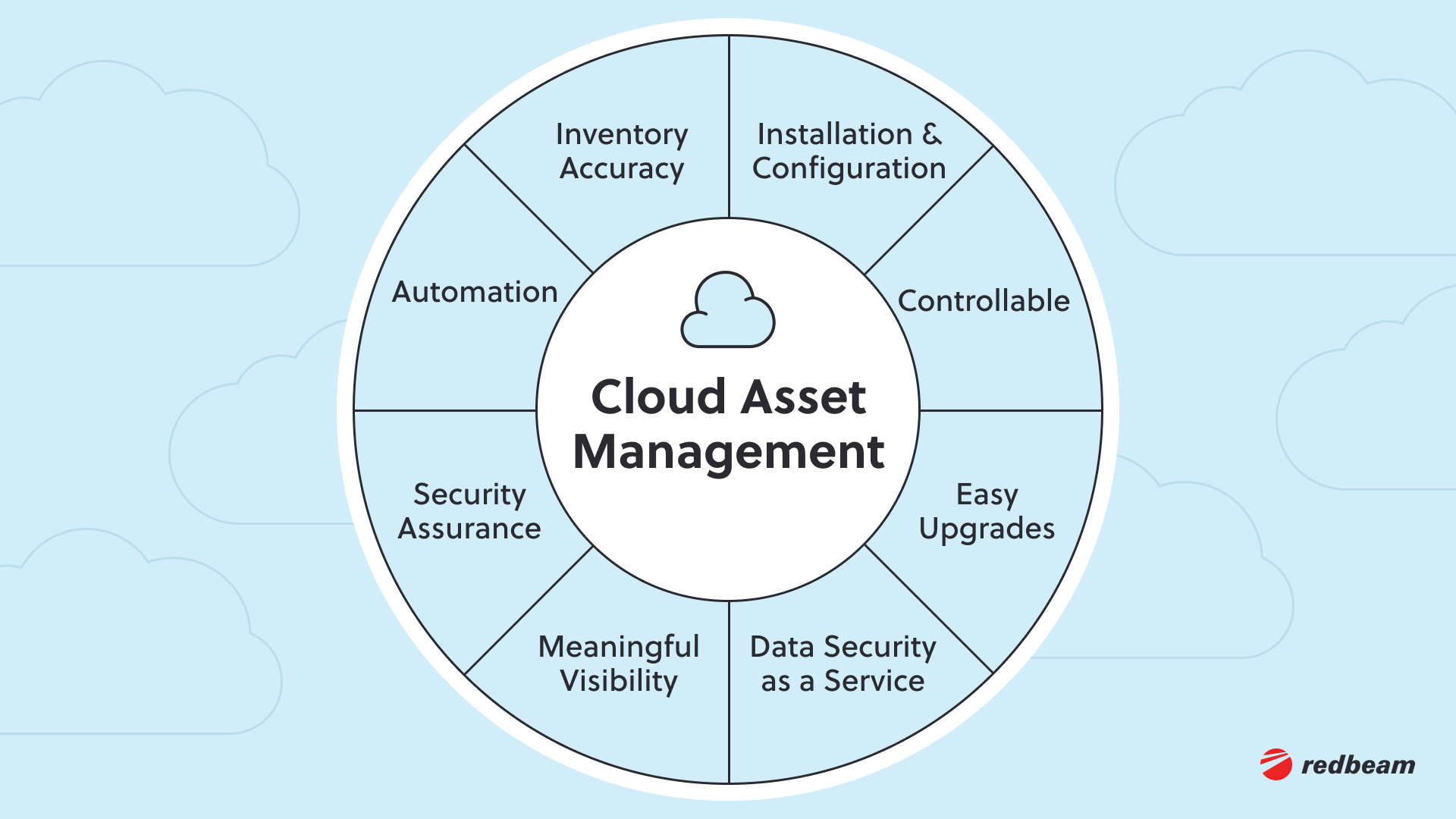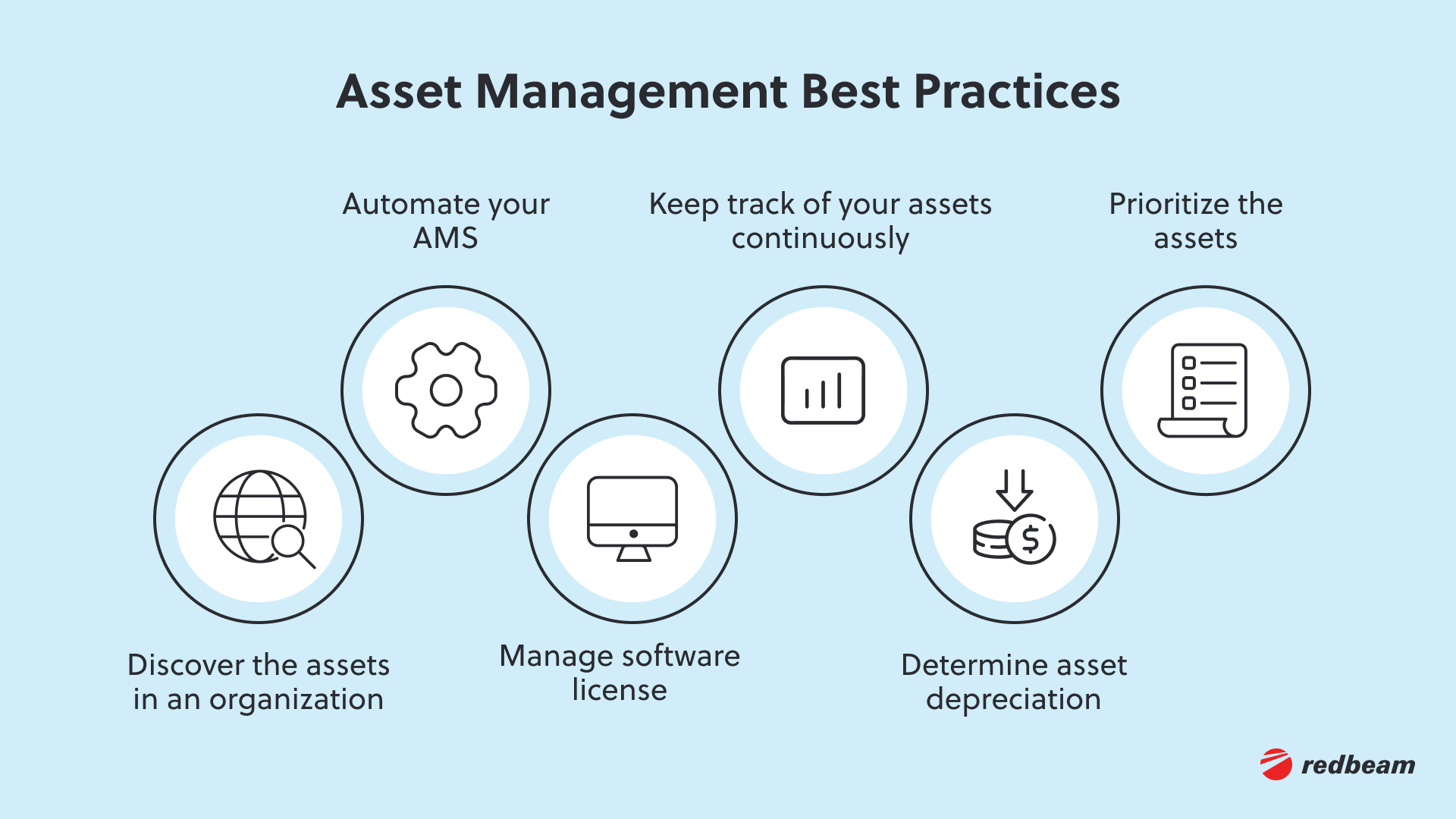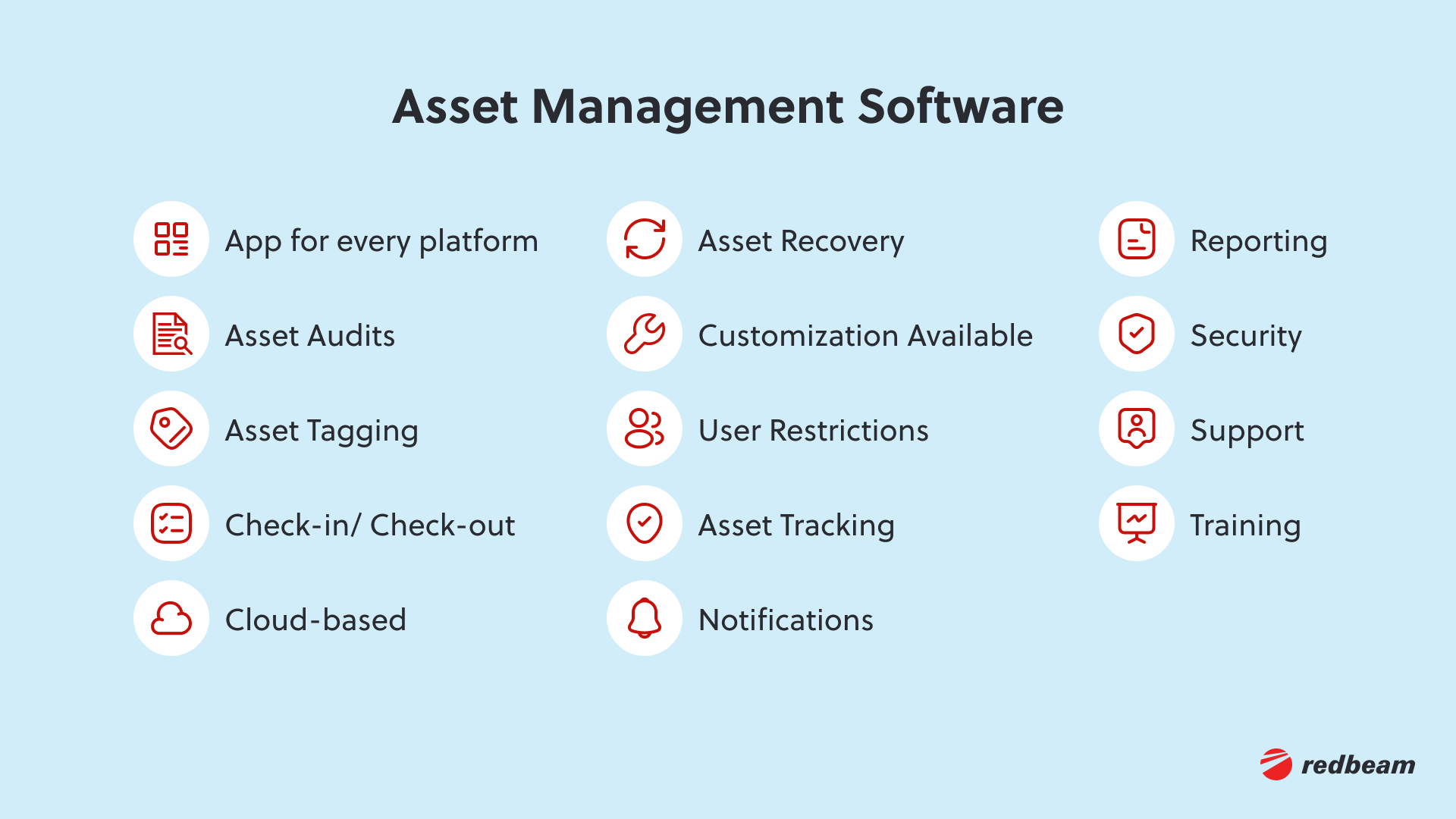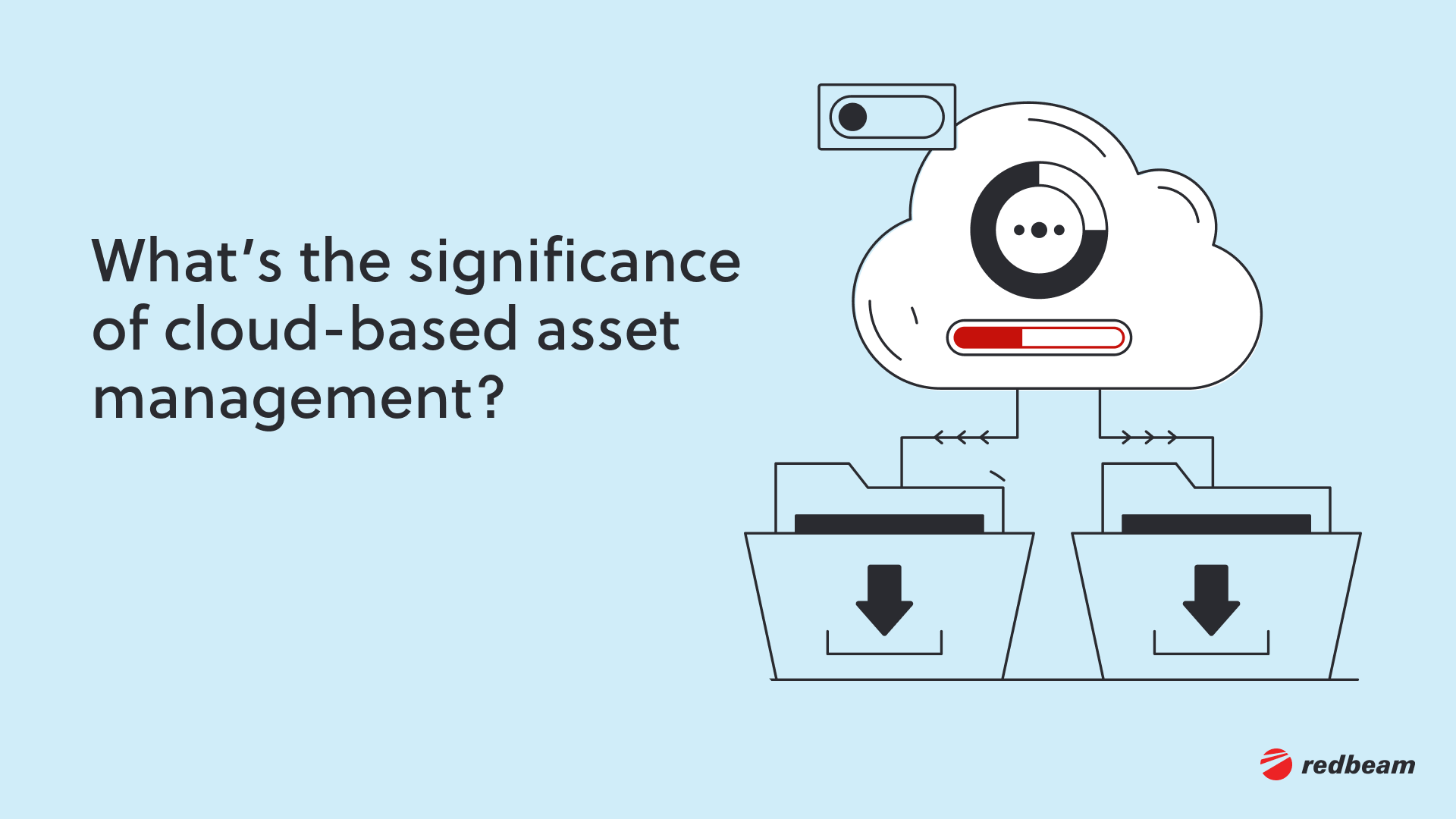In this guide, we’ll explore the best practices, strategies, and tools that can help you implement equipment inventory management effectively and transform how you manage your equipment inventory.
In an age where "it's in the cloud" is as commonplace as the air we breathe, it's evident that asset management has undergone a radical transformation. The days of pens, paper, and ledgers — or even spreadsheets — are a thing of the past.
Now, cloud-based asset management software takes center stage, fusing traditional physical asset management practices with advanced digital capabilities.
Why cling to the past when the future offers such innovation? Consider the blend of physical asset tagging with the cloud. The reality is, they're complimentary.
With technologies like barcodes feeding data into the cloud, we've created a comprehensive asset management strategy that closes the gap between the digital and physical worlds.
Now, get ready for a careful analysis of this groundbreaking approach. We'll explore how cloud-based asset management, coupled with physical tracking tactics, is redefining asset management and pushing the boundaries across industries. Let's dive right in!
What is cloud asset management?
Cloud Asset Management (CAM) is a vital practice in today's digital era, focusing on managing and tracking resources crucial for delivering cloud services.

These assets encompass both the tangible, such as physical or virtual storage, and virtual or physical servers. It also includes the intangible, like software licenses or undocumented staff knowledge.
CAM's genesis lies in the evolution of traditional asset management, interweaving time-tested IT management frameworks such as ITIL. Its purpose goes beyond just tracking. Indeed, it provides a systematic understanding of procurement, maintenance, upgrades, and cost-effective disposal of assets.
This is particularly critical for native cloud companies, where many assets are intangible.
For small businesses, spreadsheets might suffice for rudimentary asset tracking, but they falter as organizations grow. The risk of errors increases, and scaling becomes a Herculean task. Enterprise-level companies with a vast network of devices and an inherent need for effective lifecycle management necessitate specialized asset-tracking software.
The importance of this shift is supported by noteworthy trends. For example, Cisco's prediction that 94% of workloads would be processed by cloud data centers by 2021 signals a rapid move toward cloud migration and underscores the significance of CAM.
Gartner also projects that by 2027, 60% of data center infrastructure teams will have relevant automation and cloud skills, a leap from 30% in 2022.
Real-world applications of specialized asset management solutions, like the partnership between the BBC and CSS, illustrate its transformative power. The bespoke solution developed for the BBC significantly enhances storage location management, auditing, and reporting for their massive collection of 7 million media assets.
Similarly, the North Yorkshire Fire & Rescue Service modernized its asset management with the Pro-Cloud BlueLight platform, employing innovative barcoding procedures to streamline operations.
Basically, CAM is no longer an optional luxury but an indispensable part of successful business management, particularly in the growing cloud-centric landscape.
Managing assets in cloud environments
In the expansive cloud environment, asset management has evolved, with leading cloud providers offering specialized frameworks and tools tailored to their platforms.
Google, for instance, offers the Cloud Asset Inventory, a system designed to provide real-time data on the status of your cloud assets across your organization, extracting information from Google Cloud resources and policies.
The seamless integration of automation tools with this system enables continuous monitoring for any security or policy violations, allowing for timely corrective action. Additionally, the asset inventory's metadata history can be exported for further analysis.
Google's system interoperates effectively with other Security Information and Event Management (SIEM) tools, ensuring a unified view of resources across various environments.
Another significant player in this space is AWS with its Systems Manager Inventory. The AWS Systems Manager Inventory collects metadata from assets and, when connected, stores it in an Amazon S3 bucket for in-depth state analysis.
AWS prides itself on user-friendliness, offering this process as a one-click procedure. Moreover, AWS Systems Manager Inventory provides customizability, allowing for the collection of custom parameters and scheduling of collection items.
IBM takes a slightly different approach with its Multicloud Management Platform (MCMP) Cost and Asset Management (CAM). Going beyond mere inventory creation, IBM's solution analyzes cost and performance, continuously alerting leadership about wastage and potential cost-saving opportunities.
IBM's CAM addresses crucial questions such as the cost of running the business and providing IT services, the resources consumed, areas ripe for trade-offs or shedding unused services, and how IT can align more closely with future goals.
Managing assets in the cloud environment is a multifaceted process, integrating real-time tracking, security, policy compliance, and cost-effective resource management.
Each cloud provider offers its unique flavor, enhancing user experience and ensuring effective asset management.
Advantages of cloud asset management
Cloud Asset Management (CAM) elevates traditional asset management practices to a whole new level, accommodating both physical and virtual assets in cloud configurations. This advanced approach offers several distinct advantages.
Firstly, CAM bestows full visibility over all assets delivering cloud services and facilitating precise lifecycle management. This is particularly vital for organizations with service-level expectations; effective management of crucial service delivery assets can ensure uninterrupted system operations.
Furthermore, in the realm of cloud computing, automation plays a vital role, and CAM is no exception. Automations enable efficient asset management, allowing for the real-time discovery of new assets as they're incorporated and facilitating real-time cost tracking.
Moreover, inventory visibility underpins security assurance. CAM software can function alongside or as a third-party integration to bolster security measures. Beyond mere inventorying of assets, such software plays a significant role in ensuring compliance in an ever-expanding and increasingly regulated environment.
The benefits of CAM also translate into economic gains. A centralized cloud inventory, coupled with insightful automation and a clear view of the asset lifecycle, can significantly reduce capital and maintenance costs.
Furthermore, CAM allows for the adoption of preventative maintenance strategies, offering substantial cost savings for organizations.
In essence, CAM optimizes asset management in the cloud, providing comprehensive visibility, increased security, cost reductions, and streamlined operations.
Best practices for cloud asset management
Asset management software has revolutionized cloud operations, and by adopting certain best practices, organizations can reap greater benefits. Operational excellence is pivotal in cloud asset management.

This entails building a foundation of observability, automation, and scalability. This might involve:
- Automation routines
- Robust monitoring and alerting systems
- Comprehensive logging
- Capacity and quota management
- Understanding peak traffic periods
Cultivating a culture of reliability is also crucial.
System reliability isn't a destination but a continuous journey. Everyone involved in the development and delivery of services bears a shared responsibility for reliability. Reliability doesn't require costly 100% uptime.
Instead, it thrives on rapid innovation and development, serving as a prime feature in cloud asset management.
Cost optimization is another vital practice. By continuously monitoring all aspects of the network and cloud environment, organizations can streamline costs.
Encouraging visibility of expenses, fostering a sense of cost responsibility among staff, promoting collaborative optimization, and cultivating an innovative culture over a blame-oriented one, all help optimize costs while enhancing control and insight.
Lastly, performance optimization is essential.
Auto-scaling, effective data processing, employing GPUs and TPUs, and accurately identifying apps that require tuning can enhance performance.
Essentially, cloud asset management best practices revolve around operational excellence, reliability, cost optimization, and performance enhancement.
Features of cloud asset management software
The complexity of cloud environments necessitates the use of sophisticated Cloud Asset Management Software. Building upon the capabilities of Enterprise Asset Management (EAM), IT Asset Management (ITAM), and Software Asset Management (SAM) tools, these platforms incorporate a host of essential features.

For example:
Audit Management: Regular audits provide accurate checks and reviews of the current state of assets, thereby ensuring their proper usage and maintenance.
Compliance Tracking: This feature is invaluable in averting risks associated with penalties and fines for non-compliance.
- Configuration Management: This ensures that no modifications disrupt or degrade the performance of the assets.
- Contract/License Management: This ensures the legal use of software, preventing issues associated with unlicensed usage.
- Cost Tracking: By tracking all expenses related to assets, it facilitates better financial planning and effective budgeting, contributing to more efficient operations.
- Inventory Management: This supports efficient operations by providing a real-time overview of asset availability.
- Maintenance Management: This aids in scheduling and monitoring maintenance activities, which is vital for prolonging the lifespan of assets and reducing downtime.
- Procurement Management: This ensures the timely acquisition of assets, averting potential delays or shortages that might disrupt operations.
- Requisition Management: This manages requests for new assets, providing a structured approach to asset acquisition, thereby helping maintain a balanced and efficient inventory.
- Supplier Management: This includes negotiating contracts and managing supplier performance, which is crucial for ensuring continuous and satisfactory service.
These features encompass the full lifecycle of assets, making Cloud Asset Management Software a comprehensive solution for modern cloud environments.
The significance of cloud-based asset management
With approximately 50 billion devices connected to the internet, the number of virtual assets in the cloud is simply staggering. These figures serve to underscore why asset tracking has transformed from a useful option into an absolute necessity.

Asset management, as a foundational business process, aids decision-makers in reducing costs by effectively tracking and monitoring the performance of company assets.
Given the explosive growth of digital resources, it's essential that companies extend these asset management processes to their cloud resources.
The primary objective of asset management for organizations is to establish control and visibility in an ever-expanding ecosystem of trackable entities.
In a cloud-centric world where assets extend from physical devices to virtual machines, licenses, and beyond, maintaining an overview becomes a daunting challenge. However, the complexity and scale of digital assets in the cloud make asset management not merely desirable but crucial.
Cloud asset management allows companies to obtain a comprehensive, 360-degree view of asset life cycles. This means tracking an asset from its inception or acquisition, through its operational use, all the way to its eventual disposal or decommissioning.
This visibility is essential to optimize asset utilization, improve operational efficiency, and reduce unnecessary costs.
One of the key advantages of cloud asset tracking software lies in its automated functionality. New assets, whether they are devices, virtual machines, or software licenses, can be discovered and cataloged automatically.
This saves substantial time and effort compared to manual tracking processes. More importantly, it ensures no asset goes unnoticed or unaccounted for.
Moreover, automated cloud asset management provides continual tracking, making it easy to monitor and manage these assets throughout their lifespan.
This is particularly useful in ensuring that assets are appropriately maintained, their performance is optimal, and they are disposed of securely and efficiently when their life cycle ends.
Conclusion
In the era of digital transformation, cloud-based asset management has emerged as a crucial business process. With an astronomical number of devices now connected to the internet, the sheer volume of virtual assets in the cloud is staggering.
Organizations are tasked with the challenge of maintaining control and visibility over an ever-expanding ecosystem of trackable entities. Cloud asset management software provides an effective solution, allowing businesses to achieve a 360-degree view of asset life cycles while leveraging automated functionality for asset discovery, cataloging, and tracking through to disposal.
The right asset management software can make all the difference in navigating this complex landscape. It's not merely about tracking assets — it's about optimizing performance, ensuring compliance, maintaining security, and, ultimately, reducing costs.
This is where RedBeam comes into play. With its platform, you gain the confidence of knowing your assets are tracked and managed efficiently and effectively, no matter how complex or expansive your digital landscape becomes.
Moreover, taking control of your cloud assets doesn’t need to be a daunting task. RedBeam simplifies this process, offering a seamless, user-friendly experience. From inventory management to compliance tracking, RedBeam has you covered.
RedBeam is designed with these very challenges in mind, providing a comprehensive suite of features for cloud-based asset management.
Why not see for yourself how RedBeam can streamline your cloud asset management? Sign up today for a no-obligation demo and experience the difference that comprehensive, automated asset management can make for your organization.
Remember, your cloud assets are crucial to your business — ensure they're managed with the diligence they deserve.


-3.png?width=2000&name=Untitled%20design%20(1)-3.png)







